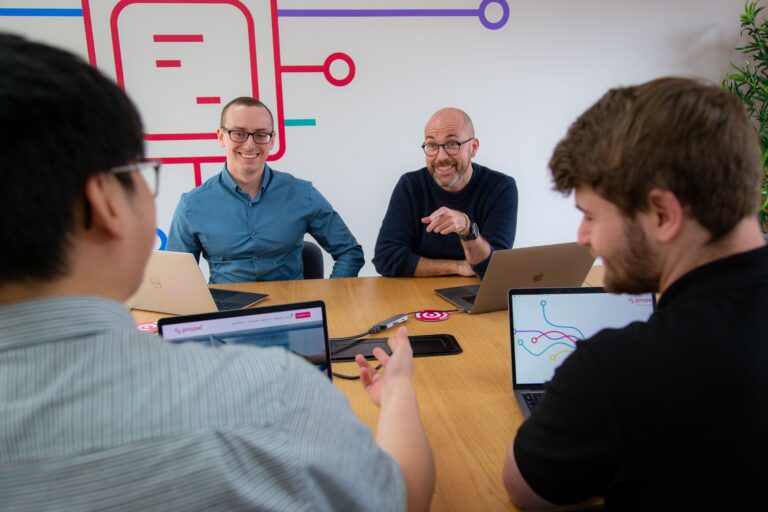The new world of work, influenced by the pandemic and The Great Resignation, has seen a rise in the workforce seeking more flexible working provisions to support the integration of work with lifestyle and personal responsibilities. It is pivotal for leaders to recognise the significance flexible working holds in recruitment, with a recent study finding flexibility to be a key factor in attracting and retaining talent.
Flexible working is often solely associated with where and when work, but leaders must broaden their definition of flexibility in the workplace. By integrating a breadth of practices that embed flexibility to transform the working culture, they can more effectively accommodate the needs of the workforce and move away from rigid conventions
Recognise individuality in progression
Leaders encouraging a ‘winner takes all’ attitude in the workplace mean employees only focus on rigid targets and promotion opportunities. No only do these extrinsic rewards remove any flexibility from individual career paths, but skills and creativity are being stifled. Instead, leaders should maintain flexibility at the heart of individual development by embedding autonomy and mastery.
Sharath Jeevan OBE, expert in intrinsic leadership and motivation and author of Intrinsic defines autonomy as ‘’ our ability to fully and convincingly take the wheel’’ and mastery as ‘’our ability to be a better and more patient driver along the journey.’’
Sharath argues: ‘’we have fundamentally confused Mastery in work with specialisation and order. Instead of genuinely harnessing Purpose and recognising individuality, we have reduced employee Autonomy through increasingly elaborate targets, incentives, competitive rewards and outright management controls.’’
Leaders must look beyond standardised annual targets and financial incentives to truly get the best out of teams.
By encouraging employees to create a ‘time diary’ they can log how time has been spent and how effective this, leaders can encourage guided autonomy which will allow individuals to progress in the speed and direction of their choosing. Nurturing managers can then guide them towards development opportunities that fit their skills and purpose.
Encourage employees to take time away from the desk
When employees become overwhelmed at work, performance begins to dwindle, and they need time to stop, breathe, and reset. Employers need to be flexible in recognising that time away from the desk during working hours is fundamental to recovery and optimal performance.
Gillian McMichael, founder of Full Circle Global, recognises that: ‘’Quieting the mind and trying to create stillness within is tricky, especially in fast-paced working environments. We can try and force things to slow down, switch off, to stop thinking, to stop analysing, but it’s difficult to do. This is only further complicated if your manager thinks you have to always be at your desk while in the office.”
Leaders must allow employees flexibility in the workplace to take time away from their desk when they feel overwhelmed. Keeping an open mind to meditation or mindful breathing activities to help people relax and recharge is also key. This will enhance energy levels and efficiency for the rest of the day.
Redefine performance management
Performance management, usually monitored through KPIs and goal setting, often focuses on the idea of managing underperformance. Instead, it should be about creating an environment where people are always striving to be better.
Rameez Kaleem, author of A Case of the Mondays, addresses the issues with common models of performance management. “These usually assume the bad performance is purely the fault of the employee, when there are many factors that can contribute to this, such as the working environment, their relationship with the manager or even factors outside of work. Performance is not something we can control or manage, but what we can do is provide the right conditions and culture to promote health, wellbeing, and productive relationships, so our colleagues can flourish in our organisations,” he says.
Leaders must create an environment of collaboration and trust where managers understand how performance is impacted by all aspects of people’s lives.
Plan to adapt
True flexibility only occurs when an organisation has built room to adapt, explains Julio Bruno, author of Passion to Lead.
“You need to get to know the plan for your organisation intimately, so that when you deviate from it due to unforeseen circumstances, you are able to adapt it. Your plan should be alive and evolve with time”, explains Julio.
Julio recommends using a balance of intuition and data analysis to understand where and how an organisation is able to evolve, but that above all, leaders should rely on their experience.
“In my experience, data alone is not sufficient to make meaningful decisions. As a leader you are paid to make decisions, the company pays you for your experience, not for your ability to compete with AI”, he says.
“Plans do evolve and change and circumstances may force you to reconsider your plans or scrap them altogether. Your ability to adapt will be key to achieving your goals.”
View the workplace as a system
Samreen McGregor, author of Leader Awakened, says that creating a more flexible working structure and environment comes from changing the way leaders view their organisation overall.
She explains that leaders commonly view organisations from a “mechanistic” perspective, as if looking at a machine with multiple components. This involves breaking down an organisation into its separate parts and solving their issues individually. It is also common for leaders to use a humanistic perspective, through the psychology and sociology of its people to better explain the behaviour of its people.
“With these approaches it is challenging to keep tabs on the environment and certain dependencies that are fluid, less visible and simply out of our control”, she says. “An alternative frame is a systemic view, one that offers the possibility of seeing the interrelated and interdependent aspects that interact across the organisational system.”
This view sees organisations as collections of people and processes, an interdependent web of tangible things such as buildings or technology, but also the intangible such as knowledge and culture. It enables leaders to devise flexible ways of working and thinking.
“Learning to see our organisations systemically, viewing the system as a whole and noticing the roles we play across those systems enable us to be more conscious, resourceful, choiceful and skilful at switching between the multiple roles organisations need us to play to make the relevant contributions in line with rapidly shifting needs – in a way that is relational”, Samreen says.
Focus on output not time
Traditionally, presenteeism has dominated the workplace with hours worked forming the standard measure for employee productivity. With remote and hybrid working becoming more mainstream, this is slowly starting to change. Lewis Maleh, executive recruitment expert and CEO of Bentley Lewis, argues the healthiest and most productive workplace cultures are those that focus on output, not time.
Lewis says: “Workplace cultures that focus solely on time spent in the office are not getting the most out of their teams. It can turn ‘who works the longest’ into a competition and can actually mask many issues, such as work quality or individual wellbeing. My team is fully remote and they are broadly free to work how they choose. I trust my team to do what works best for them to produce the desired outcomes.”
For Lewis, leaders have a responsibility to embed flexibility into working patterns, and should be embodying this, but everyone should be leading this change and working together to unpick behaviours.
“When we feel trusted and empowered we deliver not only the best work for our team, but we feel personally fulfilled” he says.









